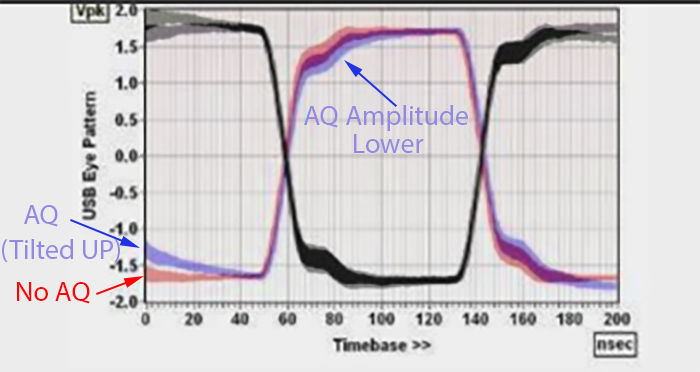radamel
Music Fiend
Too loud?
Keith
You were almost funny Keith. Wait... You were the one who talked about level matching digital transports, right?
It resulted in occasional buzz and or clicks. Could never understand why.
Too loud?
Keith
Just out of curiosity, how much inherent jitter is created by the triggering?
So , underpowered click and buzzed, overpowered clicked and buzzed, you need something just right, reminds of something...
Keith.
That is of course assuming that everything else in the computers was identical other than the faster/ slower CPU. Or are you pointlessly trying to make meaningful comparisons between only one single part in two completely different pc?
I don't think it's Keith who's missing the fine details, rather its you ignoring the two different t breeds of elephant in the room..
I'm using a Tek11302 Analogue scope as its MCP Imaged intensified CRT allows me to look at the LF data frame packets at a 500pS Div timebase.
The scope is triggered on the the USB Sync Field - then I'm using the delayed timebase to look some 55nS later at an area of "Eye Patten" data traffic.
Casually looking a the scope the Sync field repeats at 8KHz, with significant data in 1KHz packets...
The Regen Board has both heavy 8KHz noise products with USB in idle state and 1KHz with data traffic. I've not tried phase noise measurements yet - but I can already tell from PSU modulation products that its going to be poor - the question is by how much will it improve the incoming datastream?
The designers of the SMSC USB2412 USB hub device used in the ReGen has taken zero care in its design of jitter attenuation as the upstream USB Data+ pin is located next to the Xtal_Out pin - that kills any pretense of decent Jitter and RF attenuation.
PC with a fast CPU can have pretty dismal results and one with a slow CPU can work very well if its OS is properly tweaked.
Practically every Win PC has different hardware and software.
Therefore focusing purely on CPU speed is irrelevant unless you have 2 identical PC's but with differing CPU's.
The trick is to cleanse the crap before it enters the DAC.
Yes that is exactly what I hope the Detox can do so that I don't have to use ££££ on a music server/streamer/bridge like Aurender or Aurelec Aries.The trick is to cleanse the crap before it enters the DAC.
Yes that is exactly what I hope the Detox can do so that I don't have to use ££££ on a music server/streamer/bridge like Aurender or Aurelec Aries.
But instead can use something like a Intel NUC.
Then we can stop the endless discussion about CPU speed and software/windows tweaks
OK, as I expected the USB HUB does "repackage" the data and remove huge amount of the Host PC's USB Packet jitter - I can no longer see the vast amount of Process related jitter on the scope, its all much cleaner.
The edges of the waveforms still display a "Fuzzyness" which is indicative of jitter - but atleast its not an unholy mess of the direct PC connection.
I see the Regens biggest advantage is removing a lot of the "differences is sound quality" between software players and computers (With Bit Accurate Data).
I'll now have to use a more advance test step up to analyse the jitter as now the jitter is at a more acceptable level - I was worried with my first tests (USB Direct to the PC) as it was such a mess.
John, that seems encouraging. If you listen to any of your favourite test tracks do you hear any benefit to SQ with the Regen and MDAC 1 or whatever you have available?

I've also got a "Jitter Bug" for test - but as far as I can tell (looking at the USB Eye pattern) it offers very little filtering on the USB datalines themselves - I suspect its more about filtering the USB power.
Can someone point me to the Paul Miller review as I seem to recall he measured risetimes around 15nS to 20nS which is very slow (must be USB 1.1) - maybe I'm recalling incorrectly...
the measuremnt is supposedly 14.77ns with jitterbug and 21.96 withoutSomeone has posted some screenshots from the article here http://www.whatsbestforum.com/showthread.php?18311-AQ-Jitterbug-Measurements/page20&
